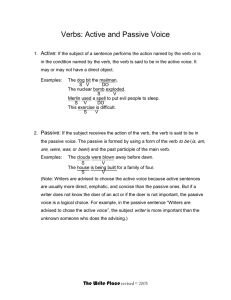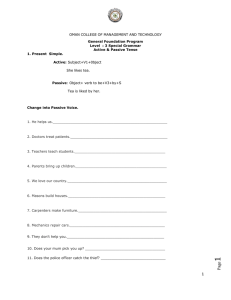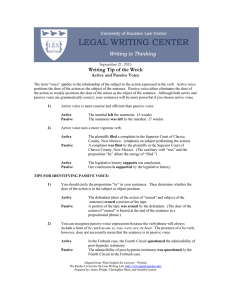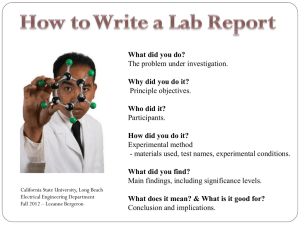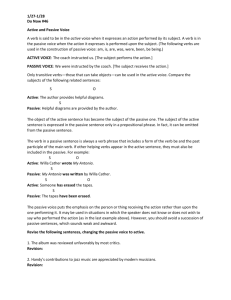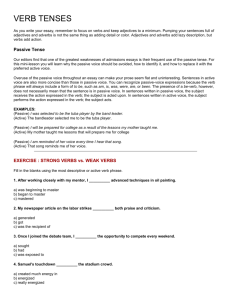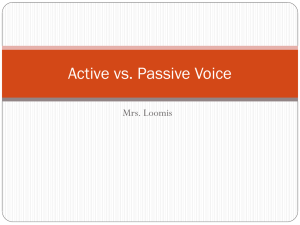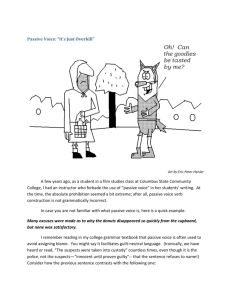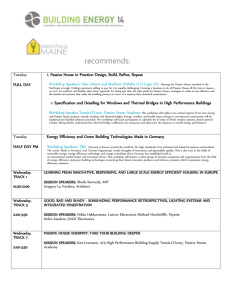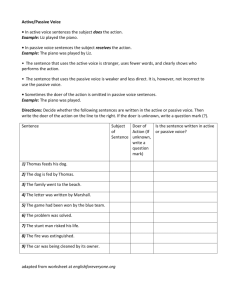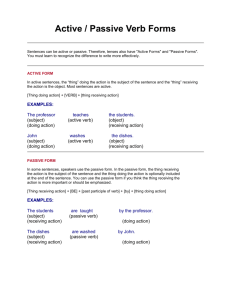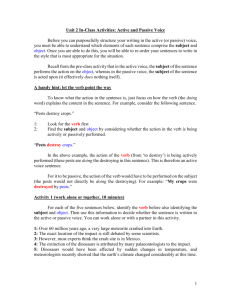Writing Laboratory Reports in Science Classes
advertisement
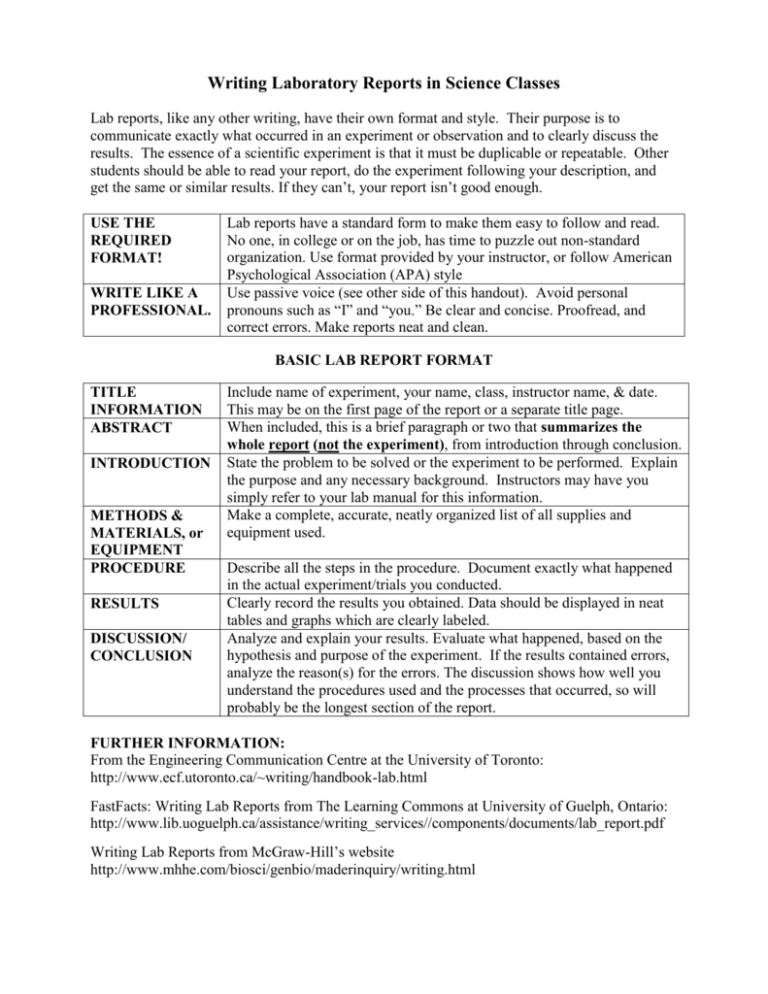
Writing Laboratory Reports in Science Classes Lab reports, like any other writing, have their own format and style. Their purpose is to communicate exactly what occurred in an experiment or observation and to clearly discuss the results. The essence of a scientific experiment is that it must be duplicable or repeatable. Other students should be able to read your report, do the experiment following your description, and get the same or similar results. If they can’t, your report isn’t good enough. USE THE REQUIRED FORMAT! WRITE LIKE A PROFESSIONAL. Lab reports have a standard form to make them easy to follow and read. No one, in college or on the job, has time to puzzle out non-standard organization. Use format provided by your instructor, or follow American Psychological Association (APA) style Use passive voice (see other side of this handout). Avoid personal pronouns such as “I” and “you.” Be clear and concise. Proofread, and correct errors. Make reports neat and clean. BASIC LAB REPORT FORMAT TITLE INFORMATION ABSTRACT INTRODUCTION METHODS & MATERIALS, or EQUIPMENT PROCEDURE RESULTS DISCUSSION/ CONCLUSION Include name of experiment, your name, class, instructor name, & date. This may be on the first page of the report or a separate title page. When included, this is a brief paragraph or two that summarizes the whole report (not the experiment), from introduction through conclusion. State the problem to be solved or the experiment to be performed. Explain the purpose and any necessary background. Instructors may have you simply refer to your lab manual for this information. Make a complete, accurate, neatly organized list of all supplies and equipment used. Describe all the steps in the procedure. Document exactly what happened in the actual experiment/trials you conducted. Clearly record the results you obtained. Data should be displayed in neat tables and graphs which are clearly labeled. Analyze and explain your results. Evaluate what happened, based on the hypothesis and purpose of the experiment. If the results contained errors, analyze the reason(s) for the errors. The discussion shows how well you understand the procedures used and the processes that occurred, so will probably be the longest section of the report. FURTHER INFORMATION: From the Engineering Communication Centre at the University of Toronto: http://www.ecf.utoronto.ca/~writing/handbook-lab.html FastFacts: Writing Lab Reports from The Learning Commons at University of Guelph, Ontario: http://www.lib.uoguelph.ca/assistance/writing_services//components/documents/lab_report.pdf Writing Lab Reports from McGraw-Hill’s website http://www.mhhe.com/biosci/genbio/maderinquiry/writing.html WRITING WITH THE PASSIVE VOICE WHAT IS PASSIVE VOICE? “Voice” refers to the way the verb is used in the sentence. Remember that a sentence has to have a subject and a verb, and many verbs require direct objects. Here’s an example of active voice: subject Babe doer verb hit action direct object the baseball. receives action In passive voice, the subject of the sentence also receives the action. The doer of the action is someone else. Here’s an example of passive voice: subject The baseball receives action WHY DO WE WRITE LAB REPORTS IN PASSIVE VOICE? EXAMPLES OF PASSIVE VOICE IN REPORTS verb is hit action by Babe. who did the action We use both voices all the time, though active is more common and often to be preferred. It’s part of the scientific point of view. We observe and record as objectively as possible, avoiding personal bias by removing ourselves. Using the passive also clarifies procedures and descriptions so they can be easily reproduced and compared. NOTE: DO NOT write reports as directions, such as those given in the lab manual. For example, do not write, “Heat the water until it boils.” Instead, write “The water was heated to boiling.” Correct: 250mL of distilled water was poured into a 500 mL beaker. Incorrect: I poured 250mL of distilled water in a beaker. (active voice) Pour 250mL water in a beaker. (direction/command) Correct: The covered crucible was mounted on a ring stand. Incorrect: We put the crucible on a ring stand. (active voice) Set the crucible on a ring stand. (direction/command) Correct: The temperature was initially measured at 80°C. Incorrect: I measured the temperature at 80°C. (active voice) Measure and write down the temperature. (direction/command) It’s understood that all actions were done by the experimenter. © 2009 Delta College Teaching/Learning Center
